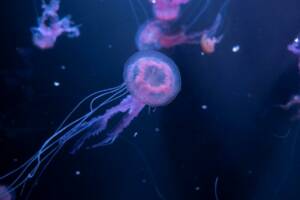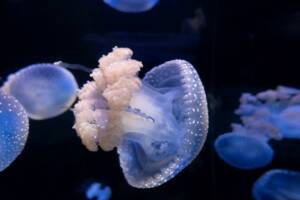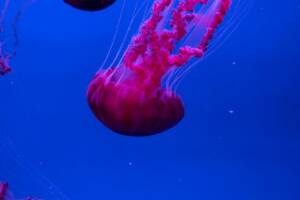The Loro Parque aquarium has become the only place in Spain where up to nine different species of jellyfish can be observed in its AquaViva exhibition. This record has allowed experts to obtain a wide knowledge of the animals and their populations.
This great exhibition has become a valuable tool for research and conservation. Thus the work of the aquarium team in self-cultivating their own species helps them to know their biological needs and to be able to apply all that knowledge in favour of their preservation. This cultivation process means that jellyfish are born from the asexual phase from polyps, which is common in the study of these species in research centres and other aquariums around the world.
These invertebrates, which are composed of 95 per cent water, play a very important role in the marine world because they are very necessary to control stocks of plankton (mostly zooplankton) and provide hydration in the diet of migratory predators.
So, despite their ‘bad reputation’, these animals are a great link in the marine food chain. In fact, these invertebrate organisms are bio-indicators of the health of our oceans and can function as organisms that, by proliferating, deregulate entire ecosystems.
In Loro Parque, visitors can observe and learn about the following nine specimens: Phyllorhiza punctata, Sanderia malayensis, Chrysaora achlyos, Chrysaora colorata, Chrysaora pacifica, Rhizostoma pulmo, Pelagia noctiluca, Phacellophora camtschatica and Aurelia aurita. In addition, three other new species are already growing in quarantine and it is hoped that they will be able to be observed in the exhibition in the coming months.













